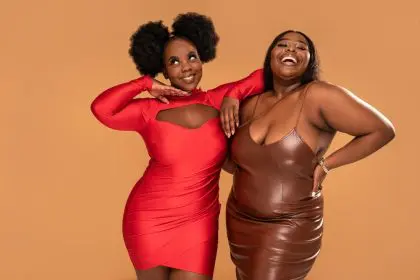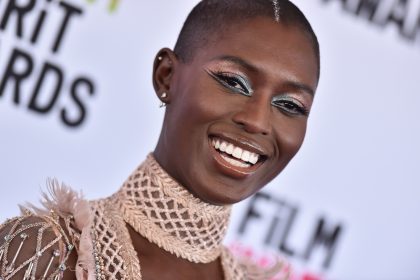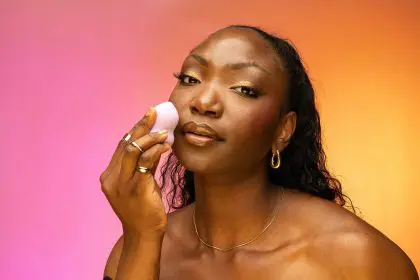First impressions form within seconds of meeting someone, and fashion choices play a crucial role in shaping those initial judgments. While personal style should reflect individuality, certain fashion mistakes can inadvertently send negative messages about professionalism, attention to detail, or social awareness. Understanding these common pitfalls helps ensure your clothing choices support rather than undermine your goals.
The psychology behind first impressions reveals that people make rapid assessments based on visual cues, with clothing serving as a primary indicator of personality traits, social status, and competence. These snap judgments, though sometimes unfair, influence everything from job opportunities to romantic prospects and social connections.
Fashion mistakes that damage first impressions often stem from poor fit, inappropriate choices for the occasion, or neglecting basic grooming details. The good news is that most of these errors are easily correctable with awareness and attention to key style principles.
The science of visual perception
Human brains process visual information incredibly quickly, forming impressions before conscious thought takes over. Clothing acts as a nonverbal communication tool, conveying messages about personality, professionalism, and social awareness. When fashion choices contradict intended messages, the disconnect creates confusion or negative associations.
Research in social psychology demonstrates that appearance significantly impacts perceived competence, trustworthiness, and likability. Well-dressed individuals often receive more positive treatment in professional settings, social situations, and service interactions. This reality underscores the importance of making thoughtful clothing choices.
The halo effect means that positive first impressions from appropriate attire can influence subsequent interactions favorably. Conversely, negative initial reactions due to fashion mistakes may require considerable effort to overcome, making prevention far more effective than correction.
12 fashion mistakes destroying your first impression
1. Wearing clothes that don’t fit properly
Poor fit represents the most common and damaging fashion mistake. Clothes that are too tight create unflattering silhouettes and suggest poor judgment or body awareness. Overly loose clothing appears sloppy and unprofessional, giving the impression of carelessness or lack of effort.
Proper fit means garments follow the body’s natural lines without pulling, bunching, or sagging. Sleeves should end at the wrist bone, pants should break slightly at the shoe, and shirts should allow comfortable movement without excess fabric. Professional tailoring transforms average pieces into polished looks.
2. Ignoring dress codes and appropriateness
Wearing inappropriate attire for the occasion immediately signals poor judgment or disrespect for social norms. Overdressing for casual events appears pretentious, while underdressing for formal situations suggests disregard for the host or occasion’s importance.
Understanding context requires research and observation. Business casual means different things in different industries, while cocktail attire varies by region and venue. When uncertain, slightly overdressing proves safer than appearing underdressed.
3. Neglecting grooming and personal hygiene
Impeccable clothing cannot compensate for poor grooming habits. Visible dandruff, untrimmed nails, or disheveled hair undermines even the most expensive outfit. Personal hygiene issues create immediate negative impressions that extend beyond fashion choices.
Basic grooming includes regular haircuts, clean nails, fresh breath, and appropriate fragrance levels. These details demonstrate self-respect and consideration for others, forming the foundation upon which fashion choices build.
4. Choosing colors that clash or overwhelm
Color combinations that fight for attention create visual chaos and suggest poor aesthetic judgment. Extremely bright or neon colors in professional settings appear juvenile or attention-seeking, while all-black ensembles in social situations may seem unfriendly or overly serious.
Understanding color theory helps create harmonious outfits that enhance rather than distract from personal interactions. Neutral bases with carefully chosen accent colors provide versatility while maintaining sophistication.
5. Wearing wrinkled or stained clothing
Wrinkled clothes immediately communicate carelessness and poor preparation. Stains, regardless of size, suggest lack of attention to detail and personal standards. These issues are entirely preventable with proper care and maintenance routines.
Investing in quality hangers, learning basic ironing techniques, and treating stains immediately prevents these easily avoidable mistakes. Steam treatments and wrinkle-release sprays offer quick solutions for busy schedules.
6. Selecting inappropriate footwear
Shoes often receive disproportionate attention in first impressions, with dirty, damaged, or inappropriate footwear undermining entire outfits. Wearing athletic shoes with business attire or flip-flops in professional settings signals poor judgment and lack of professionalism.
Quality footwear appropriate for the occasion demonstrates attention to detail and respect for dress codes. Regular cleaning and maintenance keep shoes looking professional and extend their lifespan significantly.
7. Overdoing accessories and jewelry
Excessive accessories create visual clutter and distract from personal interactions. Jangling bracelets, overwhelming necklaces, or too many rings suggest poor judgment and may appear unprofessional in business settings.
The principle of restraint applies to accessories, with fewer high-quality pieces creating more impact than numerous mediocre items. Accessories should complement rather than compete with clothing choices.
8. Wearing clothes with visible logos or graphics
Prominent brand logos or graphic designs in professional settings appear juvenile and unprofessional. These elements draw attention away from the wearer and toward commercial messaging, undermining personal branding efforts.
Quality clothing relies on cut, fabric, and construction rather than visible branding for impact. Subtle luxury indicators prove more sophisticated than obvious displays of brand names.
9. Ignoring fabric quality and texture
Cheap fabrics that pill, wrinkle excessively, or appear obviously synthetic create negative impressions about quality standards and attention to detail. Mixing incompatible textures produces visual discord and suggests poor aesthetic judgment.
Natural fibers and quality blends maintain appearance longer and create more professional impressions. Understanding fabric care requirements prevents premature wear and maintains clothing investments.
10. Selecting inappropriate undergarments
Visible bra straps, panty lines, or poorly fitting undergarments create immediate negative impressions and suggest poor attention to foundational elements. Inappropriate undergarments can ruin otherwise perfect outfits.
Proper undergarments provide smooth foundations for clothing while remaining invisible. Investing in quality, well-fitting undergarments dramatically improves overall appearance and clothing fit.
11. Wearing seasonal clothing inappropriately
Wearing heavy fabrics in summer or sandals in winter demonstrates poor judgment and lack of practical awareness. Seasonal mismatches suggest disconnection from environmental realities and social norms.
Understanding seasonal appropriateness extends beyond weather considerations to include social expectations and professional standards. Transitional pieces help navigate changing seasons while maintaining appropriateness.
12. Neglecting personal style consistency
Dramatic style inconsistencies between occasions create confusion about identity and reliability. While versatility is valuable, extreme changes in personal presentation may seem inauthentic or unpredictable.
Developing a consistent personal style foundation allows for appropriate variations while maintaining recognizable identity. This consistency builds trust and recognition in professional and social relationships.
Building a foundation for success
Creating positive first impressions through fashion requires understanding basic principles of fit, appropriateness, and quality. These fundamentals apply regardless of personal style preferences or budget constraints, making good impressions accessible to everyone.
The investment in quality basics pays dividends through improved confidence, better treatment from others, and enhanced professional opportunities. Well-fitted, appropriate clothing becomes a tool for achieving personal and professional goals.
Practical steps for improvement
Addressing fashion mistakes begins with honest self-assessment and willingness to make changes. Taking photos in different outfits reveals fit issues and style problems that mirrors might miss. Seeking feedback from trusted friends or professionals provides valuable outside perspectives.
Building a wardrobe foundation starts with quality basics in neutral colors that mix and match easily. These pieces provide versatility while ensuring appropriate options for various occasions and settings.
The long-term impact of fashion choices
First impressions influenced by fashion choices create lasting effects on personal and professional relationships. Positive initial reactions open doors to opportunities, while negative impressions may close them before conversations begin.
The compound effect of consistently appropriate fashion choices builds a reputation for professionalism and attention to detail. This reputation becomes a valuable asset in competitive personal and professional environments.
Understanding and avoiding common fashion mistakes empowers individuals to present their best selves consistently. This self-awareness and attention to detail translates into improved confidence and better outcomes across all areas of life.
The goal is not fashion perfection but rather avoiding mistakes that undermine intended impressions. With awareness and practice, anyone can master the basics of appropriate dressing and create positive first impressions consistently.

















